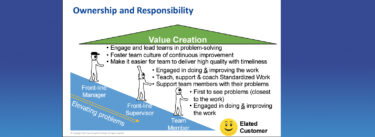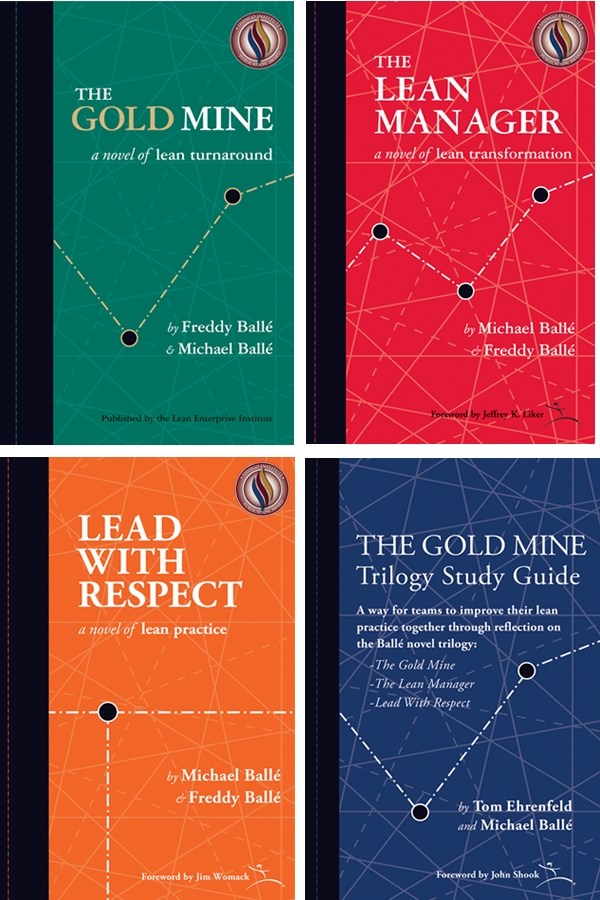New jobs are being created, old jobs are being recreated, and all jobs are adapting to the new and ever-changing “normal.” So, it’s a good time for employers to ask, “What kind of work experiences will we provide, knowing work will increasingly be defined by the interactions of people and technology?”
Picture this: with the confidence of a world-renowned expert, a frontline supervisor of a grocery store deli is handling a barrage of questions from an executive-level audience with ease. And she’s doing so despite one audience member who clearly does not like the implications of her presentation. His questions are tough. He is in charge of IT for the entire company.
This scene, which I witnessed and will elaborate on below, is an excellent example of a company wrestling with which capabilities to invest in, technology or people, as if it’s a zero-sum game.
The frontline supervisor, who I will call Andi, had just given a problem-solving presentation about rotisserie chicken stockouts — a persistent problem in her deli and, by all accounts, one that plagued every other deli in the company as well. Her presentation, shared as part of a visit by a group of executives, was the culminating event of a strategically important experiment. The company was trying out a new-to-them approach to management based on lean thinking for an entire enterprise. The executives had come to see the results
Her store’s managers, including herself, and a handful of key frontline associates had received training and on-the-job coaching on lean fundamentals such as standardized work, job instruction, and problem-solving. Along with the investment in their capabilities and to enable the effective use of these newly acquired job skills, the operating system within which they worked had been redesigned for pull-based production.
The investment in store-specific capabilities for localized problem-solving and improvement was new to the company. Historically, kaizen came from corporate.
Sharing Frontline Problem-Solving Success
In Andi’s presentation, which she had structured per the problem-solving method she had learned, she first stated the problem: rotisserie chicken was out-of-stock for customers almost 40% of the time. As an aside, she noted how difficult it was for her to measure the problem as the display case for cooked and packaged chickens was hundreds of feet from the deli. As a result, those doing the work could not witness its outcomes, for better or worse.
Then, she described how she and her team had: analyzed customer demand by time of day, doubled the number of batches cooked from the minimum of four per day (which also improved freshness for customers), combined unloading and loading the oven into a single changeover routine, employed a simple kanban system so the number of chickens cooked reflected the number sold since the previous batch, and how they had run a series of rapid experiments that led to various adjustments in the process.
The result? In little over a month, they had virtually eliminated stockouts while improving quality. Also, the work was safer with smaller batches and less time spent interacting with the oven. Finally, and most importantly, Andi and her colleagues had learned and grown.
When she finished, everyone applauded, including the IT executive, albeit with less enthusiasm than his peers. He had started to formulate his line of questioning. She beamed (!), unaware of what was to come. Tears of pride flowed, literally, from her, her co-workers, her coaches, and several of the executives. Like I said before, it was a moment I will never forget. Not only because her problem-solving presentation was a home run but also because of what happened next.
Weighing Lean Thinking and Practices vs. Technology
The company was now facing a dilemma, having spent millions of dollars on various technologies (e.g., equipment and software) that promised to solve, once and for all, operational problems like stockouts. Presumably, at least some of those investments had been pitched by the now-stewing IT executive. Yet Andi had just demonstrated an alternative approach: an operating system designed for problem-solving and teams capable of leveraging that system, which could eliminate problems such as stockouts at the root cause with a fraction of the investment.
The IT executive’s line of questioning centered on how amazing Andi was and how much “easier” it could have been for Andi and the team if technology had done the problem-solving and the thinking for them. It appeared his focus on Andi was meant to undercut the alternative approach she represented by suggesting she was exceptional. And she was, and is, amazing; no disagreement there. But the only real difference between her and her also-amazing peer supervisors in other delis was the capability she developed using the newly established operating system.
As for making problem-solving easier, why? And really? By then, I’d learned enough about the technologies in play to know that they required a lot of data which frontline associates like Andi and her team would have to provide. And in fact, feeding the technology with all that data was a lot of work! Moreover, the thinking and problem-solving she was doing were helping her learn and grow. The difference between the Andi I first met and the Andi standing in front of the room dismissing the IT executive’s insinuations was like night and day. It was the kind of personal transformation I’ve seen time and again when someone and the system they inhabit are equipped with lean thinking and practice.
Teaching About Work Through Work
As part of the experiment, the lessons she’d received about work were about its meaningfulness (solving customer problems) and the opportunity to learn and grow on the job. If the IT executive’s argument carried the day, the lessons others would learn would be to check your mind and heart at the door and just feed the computer with data — technology will take care of the rest. Work, therefore, is using your hands and feet to serve computers more than customers — the antithesis of jidoka.
Watching her impenetrable defense, like a wrongly accused suspect under examination by a prosecuting attorney, I recalled the challenge Jim Womack, PhD, founder of the Lean Enterprise Institute, had made to the company’s executives on an earlier occasion. To inspire them to invest in their frontline workers, he had observed that the company, with its hundreds of thousands of frontline associates, was one of the largest educational institutions in the country. “The only difference is you teach young people about work. The question is,” he said, “What lessons are they taking away from their employment experience with you?”
Discerning the Role of Technology
So, back to my line of questioning: “What employment experiences are you creating? What lessons are you teaching the employees you’re responsible for, explicitly and implicitly, about work, about serving customers, about the relationship between technology and people?”
Through the experiment in her deli, as evidenced on that day, Andi experienced good work. It had been connected to and designed in service of her customers. Her capability, and that of the operating system, had been developed to achieve said purpose. Plus, she was positively impacting the bottom line! And in the process, the company had given her a life experience that she — and I — will never forget. How’s that for a company’s legacy?
Investing in technology and investing in people are not mutually exclusive options. Employers can — and should — invest in both. That said, will the technology work for your people or the other way around? That is a choice to be made.
Editor’s Note: This Lean Post is an updated version of an article published on April 20, 2021.







Many don’t realize that when implementing technology, the software runs only as well as the data that is input. To do this correctly usually requires hiring additional staff, or at the very least, adding work to the existing staff. In this case, the chickens still need to be cooked by humans (there was no mention of the technology taking over on that front) so there really was no burden being removed by the technology, other than the analytics into how many to make on any given day, a minor part of the manager’s workday. A well-operated Kanban was the best way to go in this instance. If the product had not been a perishable item, it may have not been the best option.